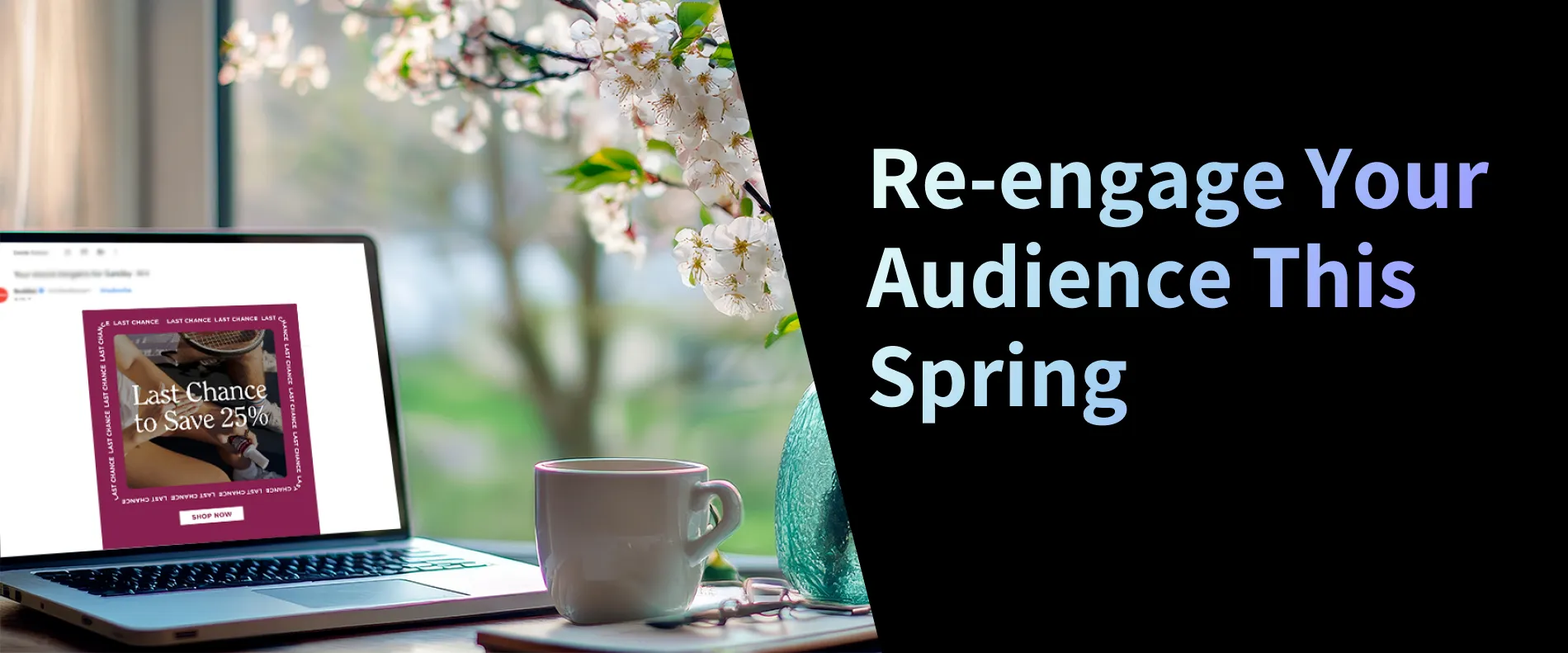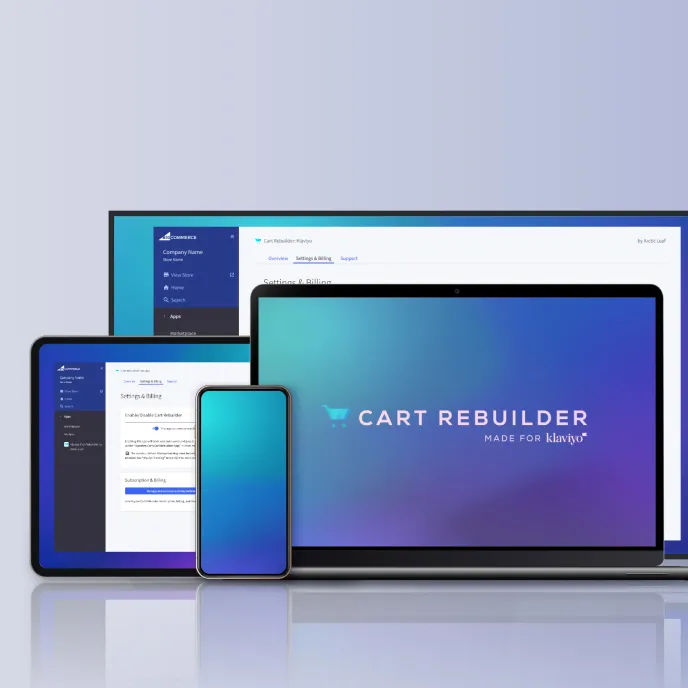Re-engaging Customers After the Winter Slump
Key Takeaways from the Blog Post
-
Audience segmentation is necessary for tailoring email content and boosting engagement.
-
Personalization increases customer loyalty and drives higher revenue per email.
-
Segmentation helps target customers based on demographics, behaviors, and past purchases.
-
Craft content specific to customer segments for better re-engagement and retention.
-
Measure open rates, click-through rates, and conversion rates to refine your strategy.
Re-engaging Customers After the Winter Slump
Email Marketing Strategies That Work
Winter can lead to a slump in customer engagement. As the season winds down, so does interest. Customers may have lost touch with your brand, and re-engaging them can feel like an uphill battle.
Email marketing is one of the most powerful tools you have to re-establish those connections. But, to properly take advantage of it you must be sending emails to the right people at the right time. This is where audience segmentation comes in. By understanding your customers’ behaviors and preferences, you can tailor content that speaks to them directly, improving both engagement and loyalty.
In this post, we’ll break down the steps to apply audience segmentation for email campaigns, and how personalization strategies can breathe life back into your email marketing strategy. Forget one-size-fits-all approaches. If you want real growth, you need a plan that speaks to your customers as individuals!
Why Segmentation Is Essential For Re-engagement
Segmentation is a powerful tool in your email marketing strategy and a key element of growth marketing. It’s the process of dividing your customer base into distinct groups based on behaviors, preferences, and other key factors. This allows you to create targeted, relevant content for each segment, leading to better engagement and higher conversion rates.
Despite its importance, many businesses misunderstand segmentation. They think it’s a time-consuming task or that it’s only necessary for large companies with massive databases. The reality is that segmentation works for businesses of any size and gives you an edge in building stronger, more personal connections with your customers.
Here’s how segmentation drives retention marketing strategies:
-
More targeted email content: By tailoring messages to specific customer segments, your emails become more timely and engaging.
-
Higher engagement: Segmented email campaigns can increase open rates by 14.31% and click-through rates by 100.95%.
-
Better customer loyalty: Personalized emails make customers feel seen. Loyal customers are 5x more likely to repurchase, 5x more likely to forgive, and 7x more likely to try new products.
In short, audience segmentation for email campaigns is necessary to re-engage customers and encourage repeat business.
Audience Segmentation for Email Campaigns
Audience segmentation is the foundation of any successful email marketing strategy. By categorizing your audience into distinct groups, you send more valuable, tailored messages. Here are the most common ways to segment your email lists:
-
Demographics: Age, gender, income level, etc. Target different offers based on life stages or interests.
-
Behavior-based: How customers interact with your emails, website, or products. Segment based on clicks, opens, or actions taken.
-
Past purchase: Recommend products based on previous buys. Use this data for cross-selling or up-selling.
-
Engagement levels: Separate active, inactive, and new subscribers. Adjust content to re-engage the dormant ones.
For spring campaigns, segmentation by location and seasonal behavior matters. Knowing
where your customers are and what they need seasonally allows you to send targeted offers that match the time of year, improving engagement rates.
Personalization Strategies in Email Marketing
Personalization in email marketing goes beyond just inserting a customer’s name in the subject line. To truly engage, you need to understand your audience’s behavior, preferences, and past interactions.
Here’s how tailored content makes a real impact:
-
Dynamic product recommendations: Use past purchase data to suggest relevant products, making your emails more actionable. This leads to 26% higher revenue per email.
-
Behavior-driven emails: Trigger emails based on actions like abandoned carts, product views, or past purchases. These emails have a 3x higher click-to-open rate.
-
Personalized offers: Send exclusive deals or rewards based on customer loyalty. Personalized offers can increase transaction rates by 10%.
Personalization creates a dialogue with customers, keeping them engaged over the long term. This connection fuels retention marketing strategies and strengthens their commitment to your brand. For even deeper personalization, consider leveraging third-party tools like Revamp or Movable Ink to tailor content dynamically and maximize engagement.
Crafting Email Content for Different Customer Segments
Crafting email content that speaks to different customer segments is crucial for re-engagement and retention.
Here’s how to tailor your messaging based on customer activity:
-
New Customers: Focus on onboarding. Introduce your brand, values, and benefits. Use educational content to build trust.
-
Example: “Welcome! Here’s how you can make the most of our products.”
-
Dormant Customers: Re-engage them with incentives. Remind them of the value you offer and provide a reason to return.
-
Example: “We miss you! Here’s a 20% discount to reignite your experience.”
-
Frequent Buyers: Show appreciation and reward loyalty. Provide personalized recommendations or exclusive offers to keep them engaged.
-
Example: “Thanks for being a loyal customer! Here’s a sneak peek of our new arrivals.”
-
First-time Buyers: Guide them with educational or informational content to ensure a positive first experience.
-
Example: “Here’s how to get started with your first purchase.”
There’s a big difference between promotional, educational, and engagement-focused emails. Tailor your content based on the goal of the email: Promotional emails offer discounts or deals to increase sales, educational emails provide content that teaches customers and helps them get more value from your product, and engagement-focused emails spark interaction to keep your brand top of mind. Segment your audience and adjust your email content accordingly to maximize both engagement and loyalty!
Retention Marketing Strategies That Work in the Spring
Re-engaging customers in the spring requires timely, fitting content that taps into seasonal interest. Here’s how to make it happen:
-
Segment by Seasonal Behavior: Use segmentation to target customers based on their spring-related activities, like purchases or browsing behavior from past seasons.
-
Example: “Spring Sale for Repeat Buyers – Up to 30% off!”
-
Seasonal Promotions: Offer discounts, limited-time offers, or product bundles that align with spring trends or needs.
-
Example: “Get your garden ready with our spring essentials – 20% off today!”
-
Exclusive Offers for Loyal Customers: Reward repeat buyers with early access to sales or VIP-only promotions.
-
Example: “As a loyal customer, you get early access to our spring collection!”
-
Content Focused on Seasonal Relevance: Tailor emails to highlight products or services that match the customer’s spring-related activities (outdoor gear, home improvements, etc.).
-
Example: “Spring is here. Time to refresh your wardrobe. Check out our new arrivals!”
When re-engaging, you must balance these efforts with acquisition. While winning back dormant customers is key, new customer acquisition should still be a priority. Keep your email marketing strategy balanced to build both long-term relationships and a solid customer base.
Measuring the Success of Your Segmentation Strategy
To measure the success of your segmented email campaigns, focus on these core metrics:
-
Open Rates: This shows whether your subject lines are grabbing attention. If open rates are low, reconsider your segmentation or messaging strategy.
-
Target: 37%+ for most industries.
-
Click-Through Rates (CTR): Track how many recipients click on your links. High CTR indicates that your content is resonating with the right people.
-
Target: 1-1.5% for most industries.
-
Conversion Rates: This tracks the ultimate goal – turning readers into buyers or leads. If your conversion rates are low, consider revisiting the offer or call to action (CTA).
-
Target: 0.09% for most industries.
-
Unsubscribe Rates: If segmentation is off, customers may leave your list. High unsubscribe rates suggest that your emails are not relevant enough.
-
Engagement Metrics: Track how customers interact with your emails. Segment based on opens, clicks, and engagement levels for future campaigns.
Use this data to refine your email marketing strategy. Adjust your audience segmentation for email campaigns and tailor email content for different customer segments to improve retention marketing strategies. Keep testing and optimizing to improve results.
Final Thoughts
Segmentation and personalization are essential for successful email marketing and growth marketing. These strategies help deliver relevant content to the right audience and improve engagement after the winter slump. With proper segmentation, you can target specific groups, while personalization makes the content feel more tailored. These approaches support retention and foster loyalty.
Ready to apply these strategies? At Arctic Leaf, we specialize in email marketing strategy, segmentation, and content to help brands succeed. Contact us to start your next email campaign with precision and impact.





